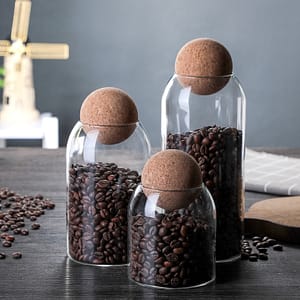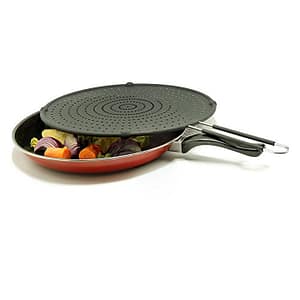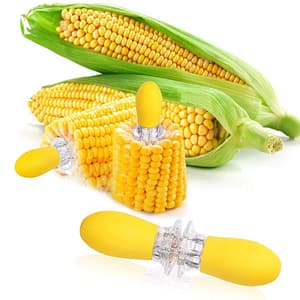
Blog Details

Coffee Grounds: 7 Surprising Kitchen & Garden Uses
That steaming cup of coffee in the morning is a cherished ritual for millions around the world. But what happens once the last drop is brewed?
For many, the used coffee grounds go straight into the trash. What a waste! These seemingly spent grounds are actually a powerhouse of potential, packed with nutrients, abrasive qualities, and odor-absorbing magic.
Before you toss them, prepare to be surprised. You’re sitting on a goldmine of natural resources that can revolutionize your kitchen cleanup, boost your garden, and even refresh your home.
Let’s unlock the hidden power of used coffee grounds and turn your daily brew into a daily win for sustainability and savings!
Beyond the Brew: Surprising Uses for Coffee Grounds
Here are 7 innovative ways to give your used coffee grounds a second life:
-
Natural Deodorizer: Coffee grounds are champions at absorbing odors.
- In the Fridge/Freezer: Place a small open bowl of dried coffee grounds in your fridge or freezer to neutralize lingering food smells.
- For Your Hands: After chopping garlic or onions, rub a small amount of grounds between your hands (like you would with soap) and rinse. The abrasive texture helps, but it’s the coffee’s ability to absorb odors that truly works wonders.
- In Shoes or Closets: Fill an old stocking or sachet with dried grounds and place it in smelly shoes or damp closets to wick away moisture and odors.
-
Gentle Abrasive Cleaner: The gritty texture of coffee grounds makes them perfect for scrubbing.
- Pots & Pans: Sprinkle a few grounds on stubborn, caked-on food in pots and pans (especially effective on non-reactive surfaces like stainless steel or glass, but avoid on delicate non-stick or very porous materials) and scrub with a sponge. They’re tougher than dish soap but gentler than harsh chemicals.
- Sinks: Use them to scrub and deodorize your kitchen sink.
-
Garden Fertilizer & Soil Amendment: Coffee grounds are a secret weapon for many gardeners. They add nitrogen, phosphorus, potassium, and micronutrients to the soil.
- Direct Application (Thin Layer): Sprinkle a thin layer (no more than 1/8 inch) of dried grounds around acid-loving plants like roses, blueberries, hydrangeas, azaleas, and rhododendrons. Gently rake them into the topsoil.
- Compost Booster: Add them to your compost pile! They are considered a “green” material due to their nitrogen content, helping to heat up the pile and accelerate decomposition. If you’re new to composting, check out our guide on [Sustainable Kitchen Habits for a Greener Home](link to relevant internal blog post if available).
-
Pest Deterrent (Garden): Many common garden pests dislike coffee grounds.
- Slugs & Snails: Sprinkle a barrier of grounds around vulnerable plants. The abrasive texture and caffeine are believed to deter them.
- Ants: Scatter grounds around ant entry points or trails to discourage them.
- Cats/Dogs: Some gardeners find the scent of coffee grounds deters curious pets from digging in garden beds.
-
Homemade Exfoliating Scrub: Rich in antioxidants and naturally abrasive, coffee grounds make an excellent, invigorating body scrub.
- Mix 1/4 cup used coffee grounds with 2 tablespoons of olive oil or coconut oil and a tablespoon of sugar. Gently rub onto skin in circular motions in the shower, then rinse thoroughly for smooth, glowing skin. (Avoid using on your face if you have sensitive skin, as the particles can be too coarse.)
-
Meat Tenderizer: Yes, really! The natural acids and enzymes in coffee can help break down tough meat fibers.
- Rub a thin layer of fine, dried coffee grounds onto tougher cuts of meat before grilling or roasting. Let it sit for an hour or two (or even overnight in the fridge) before wiping off the excess and cooking as usual. It adds a subtle earthy flavor without tasting like coffee.
-
Natural Dye for Crafts: Looking for an eco-friendly way to tint paper or fabric?
- Boil used coffee grounds in water, then strain. Use the resulting coffee “tea” to dye paper for an aged look, or lightly tint natural fabrics like cotton or linen for a rustic, earthy tone.
The next time you enjoy your morning brew, remember that the journey of those coffee beans doesn’t have to end in the trash. With a little creativity, your used coffee grounds can become an invaluable resource for a cleaner home, a thriving garden, and a more sustainable lifestyle. So, go ahead, make that extra cup – your kitchen and garden will thank you!
FAQ: Repurposing Coffee Grounds
Do coffee grounds make soil more acidic for plants?
While fresh coffee grounds are acidic, used coffee grounds are generally close to pH neutral (around 6.5-6.8) after brewing. Their effect on soil pH is minimal and short-lived. They primarily act as a nitrogen source and soil conditioner. For plants that truly need acidic soil (like blueberries), other amendments are more effective.
Should I dry coffee grounds before storing or using them?
Yes, it’s highly recommended to dry used coffee grounds before storing them or using them for most purposes (especially for deodorizing or dry applications in the garden). Wet grounds can quickly grow mold. Spread them thinly on a baking sheet or newspaper in a well-ventilated area until completely dry.
Are coffee grounds safe for all plants?
Generally, yes, when used in moderation and mixed into the soil or compost. Avoid applying thick layers directly on top of the soil, as they can compact and form a crust, preventing water from reaching roots. Always use sparingly around very young seedlings, as caffeine can inhibit growth.
Can I use coffee grounds in my indoor plants?
Yes, you can! Sprinkle a very thin layer (a pinch or two) of dried coffee grounds on the surface of your indoor plant soil and lightly mix it in. This can provide a gentle nutrient boost. Be cautious not to overdo it, as excessive amounts can lead to mold or create soil compaction over time.
Our Products
-
Unique Book Coffee Cup – Stack of Books Design
₹1,681.00 – ₹1,695.00Price range: ₹1,681.00 through ₹1,695.00 Select options This product has multiple variants. The options may be chosen on the product page -
Salt & Pepper Electric Grinder – Rechargeable
₹2,435.00 Select options This product has multiple variants. The options may be chosen on the product page -
Glass Storage Jar – Cork Lid & Minimalist Design
₹2,563.00 Select options This product has multiple variants. The options may be chosen on the product page -
Food grade Silicone Splash Screen – Mess-Free Cooking
₹2,158.00 Select options This product has multiple variants. The options may be chosen on the product page -
Stainless Steel Corn Cob Holders – Mess-Free
₹1,086.00 Select options This product has multiple variants. The options may be chosen on the product page -
Silicone Donut Mold – Makes 6 Non-Stick Donuts
₹833.00 Select options This product has multiple variants. The options may be chosen on the product page
Products
-
Unique Book Coffee Cup – Stack of Books Design
₹1,681.00 – ₹1,695.00Price range: ₹1,681.00 through ₹1,695.00 Select options This product has multiple variants. The options may be chosen on the product page -
Salt & Pepper Electric Grinder – Rechargeable
₹2,435.00 Select options This product has multiple variants. The options may be chosen on the product page -
Glass Storage Jar – Cork Lid & Minimalist Design
₹2,563.00 Select options This product has multiple variants. The options may be chosen on the product page -
Food grade Silicone Splash Screen – Mess-Free Cooking
₹2,158.00 Select options This product has multiple variants. The options may be chosen on the product page









